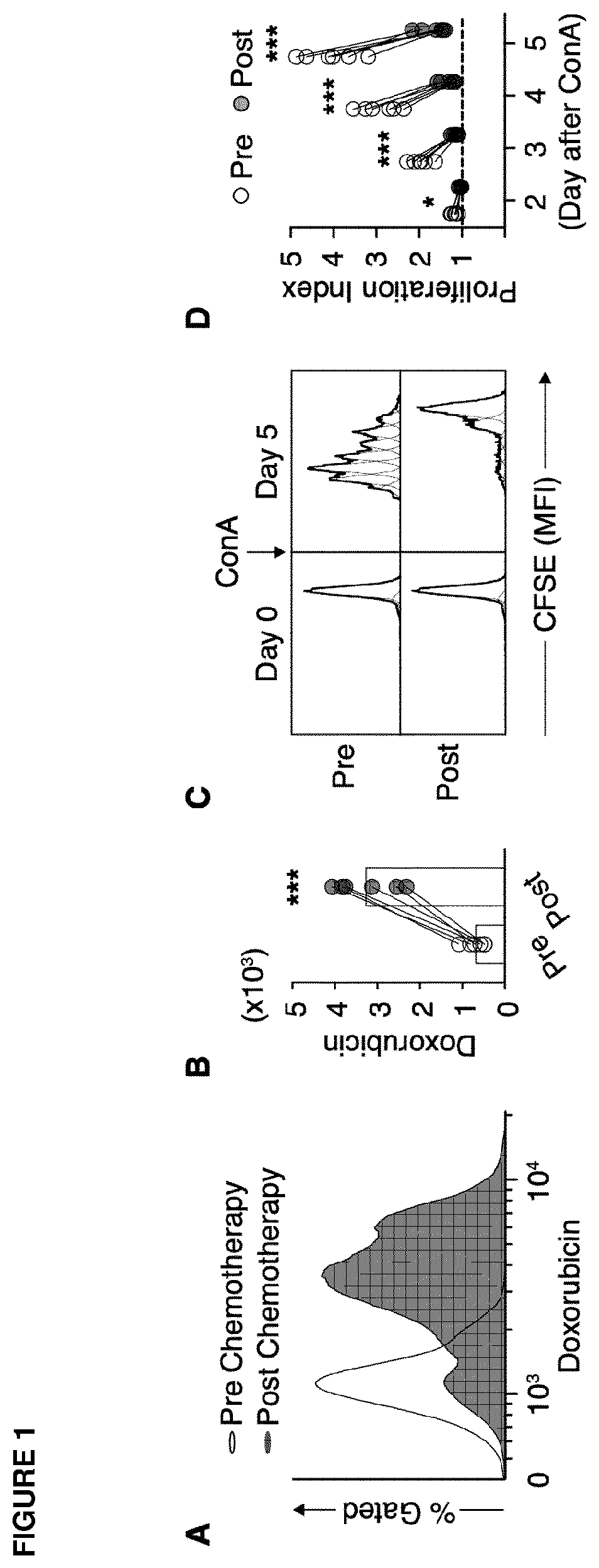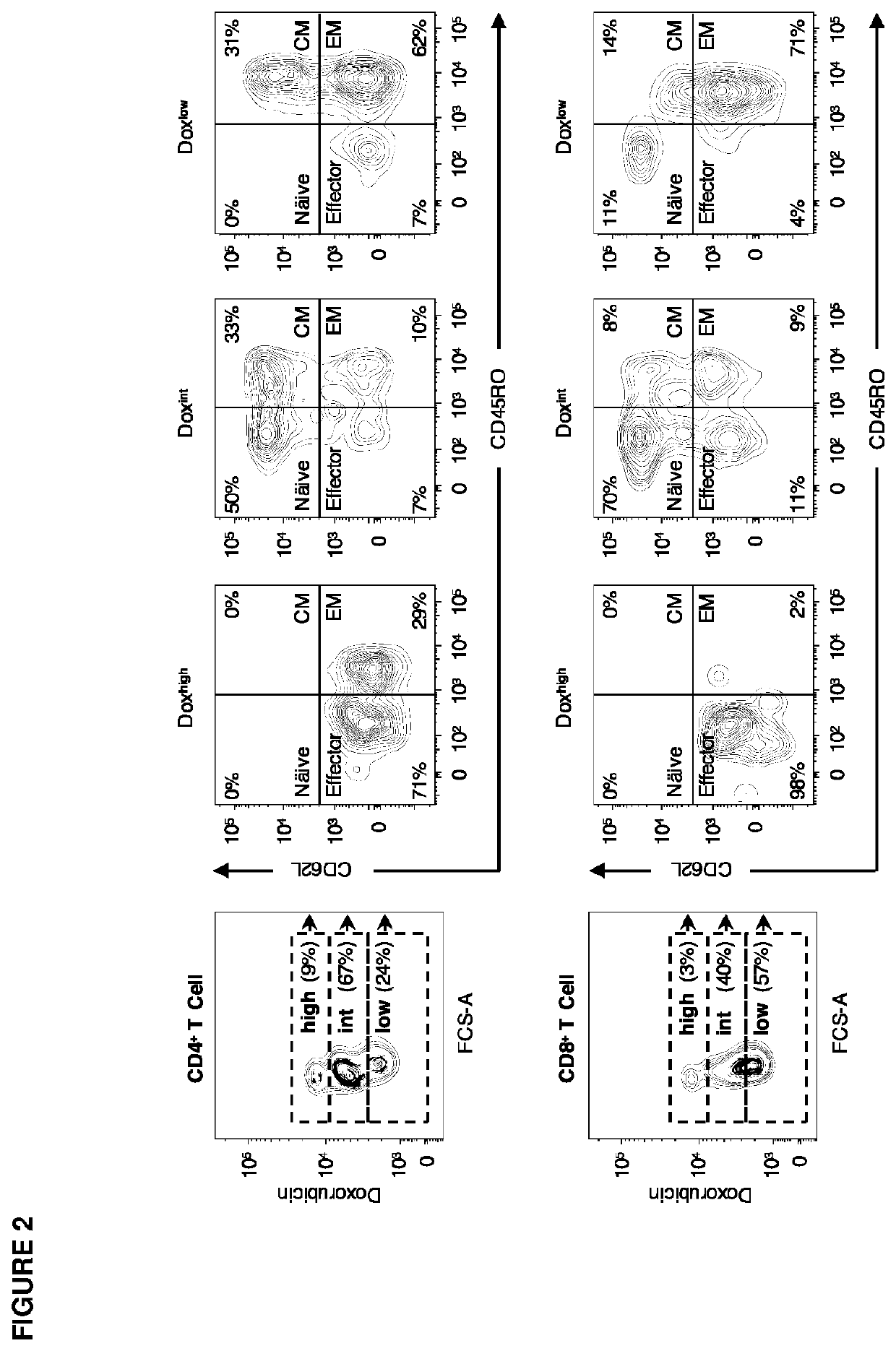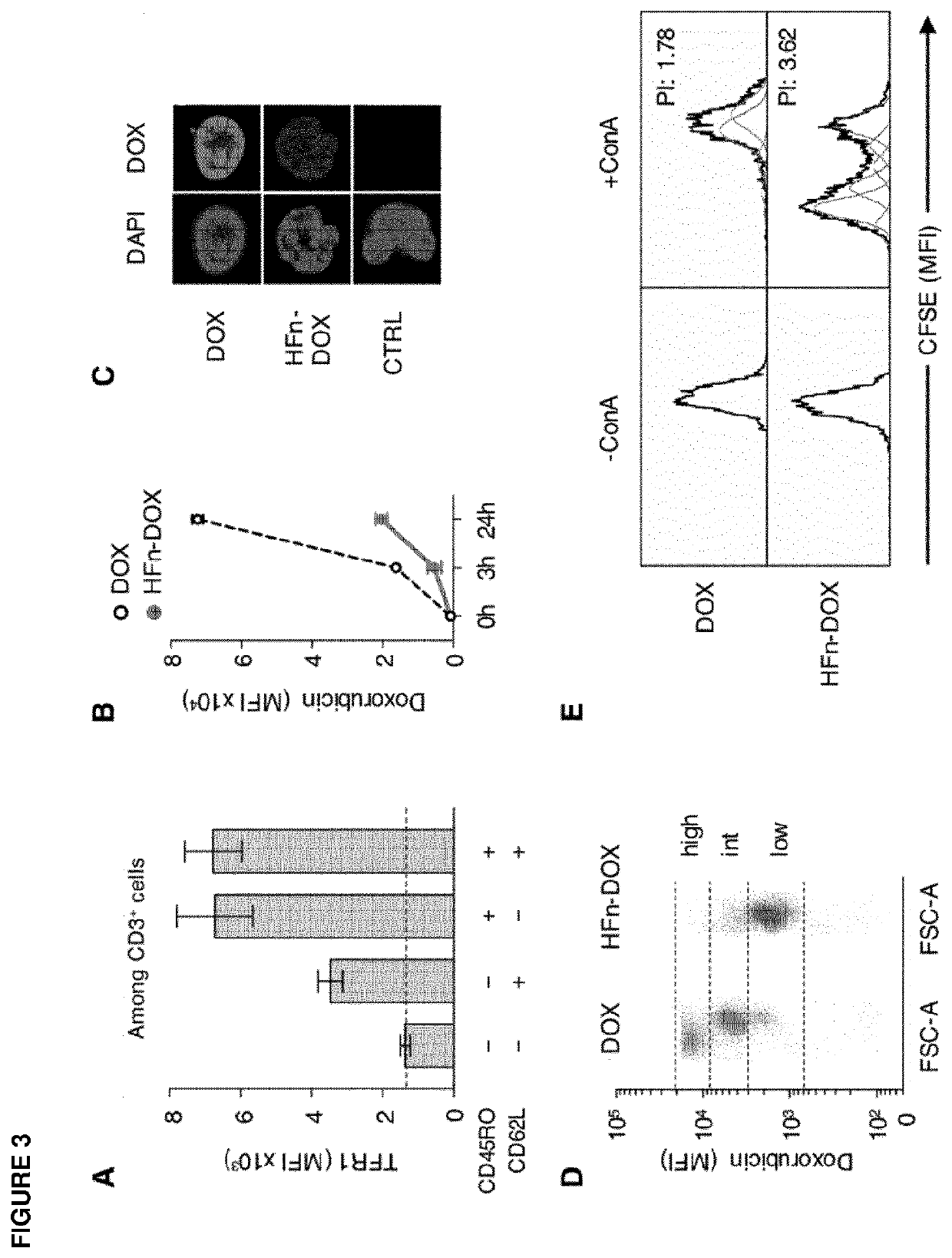Ferritin nanoparticles comprising a chemotherapeutic agent
- Summary
- Abstract
- Description
- Claims
- Application Information
AI Technical Summary
Benefits of technology
Problems solved by technology
Method used
Image
Examples
example 1
[0066]HFn-DOX production: HFn Design, Synthesis, Loading and Characterization.
[0067]A ferritin nanoparticle also indicated herein as “HFn nanocage” according to the present invention has been produced by DNA recombinant technology in E. coli, after the design of an appropriate expression vector. The reverse complement of the cDNA encoding for the heavy chain of human ferritin was modified by inserting the restriction sites for NotI and NdeI (in 5′ and 3′ respectively) and synthesized by Eurofins MWG Operon. The resulting DNA fragment was subcloned into the pET30b(+) vector between NotI and NdeI restriction sites to express the HFn under the control of the T7 promoter. The resulting plasmid pET30b(+) / HFn was used to transform by heat-shock the E. coli expression strain BL21(DE3) and transformed clones were selected for kanamycin resistance.
[0068]HFn production procedure was set up in 1 l flask and then scaled up in a 1 L bioreactor preserving mostly the same procedure of protein prod...
example 2
HFn-DOX In Vitro and In Vivo Antitumor Activity
[0074]Regarding in vitro activity, HFn interaction with cancer cells was assessed by flow cytometry after incubation of FITC-labelled HFn with a panel of murine and human cell lines of cancer, mainly breast cancer, for 2 h at 4° C. HUVEC cells were selected as healthy cells with high TfR1 expression. Competition assay performed using unlabelled HFn as competitor revealed that the interaction between HFn and cell lines is specific. Confocal microscopy evidenced that HFns are quickly internalized and colocalize with the transferrin receptor 1.
[0075]The HFn-DOX nanodrug is more effective in reducing cancer cell viability in comparison to free DOX, as reported in viability assays performed with 4T1 and HeLa cells.
[0076]Then, we have assessed the in vivo activity of HFn-DOX nanodrug. We have used as proof of concept an ortotopic allograft breast cancer model obtained by injection of 4T1 cells in the mammary fat pad of 6-8 weeks old BALB / c fe...
example 3
Innovation: DOX Formulation Able to Preserve Immune Competence of T-Cells
[0085]Breast Cancer (BC) is the most frequently diagnosed malignancy and the second leading cause of cancer-related death among women. Anthracyclines such as doxorubicin (DOX) are considered a mainstay in chemotherapy for BC treatment due to their excellent cytotoxic activity. Indeed, DOX displays a direct cytotoxicity in BC cells by directly interfering with DNA replication and thus it is very effective against highly proliferating cancers. Besides its direct killing activity, DOX acts enhancing tumor immunogenicity: DOX induces the immunological cancer cell death (ICCD) that facilitates antigen presentation by dendritic cells (DC). Indeed, cancer cells are recognized as non-self by the immune system, since they express particular Tumor Asscociated Antigens and / or Neoantigens. The first ones are recognized as non-self since they are expressed in aberrant manner in tumors, while the Neoantigens are proteins whi...
PUM
| Property | Measurement | Unit |
|---|---|---|
| Chemotherapeutic properties | aaaaa | aaaaa |
Abstract
Description
Claims
Application Information
 Login to view more
Login to view more - R&D Engineer
- R&D Manager
- IP Professional
- Industry Leading Data Capabilities
- Powerful AI technology
- Patent DNA Extraction
Browse by: Latest US Patents, China's latest patents, Technical Efficacy Thesaurus, Application Domain, Technology Topic.
© 2024 PatSnap. All rights reserved.Legal|Privacy policy|Modern Slavery Act Transparency Statement|Sitemap



